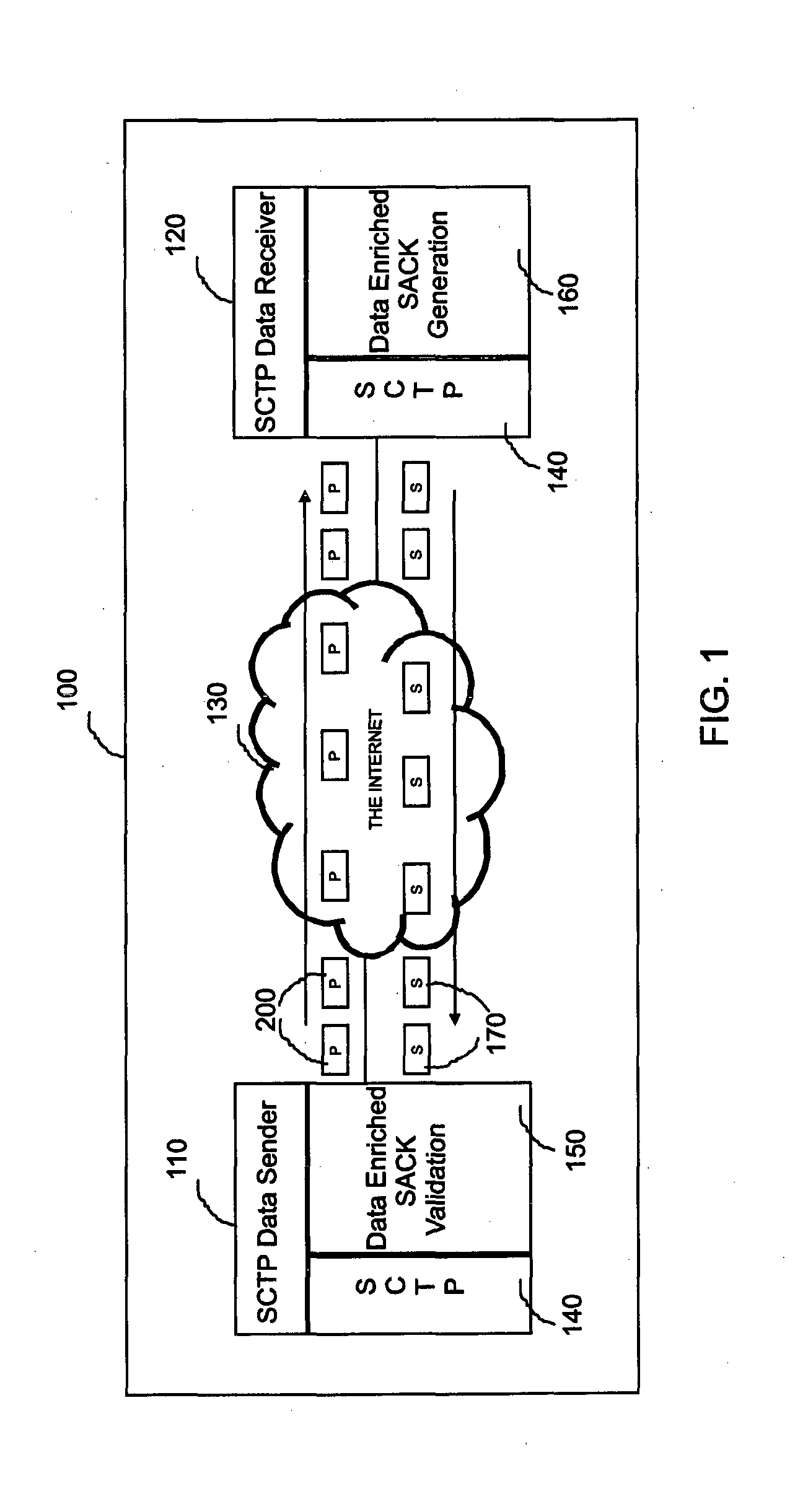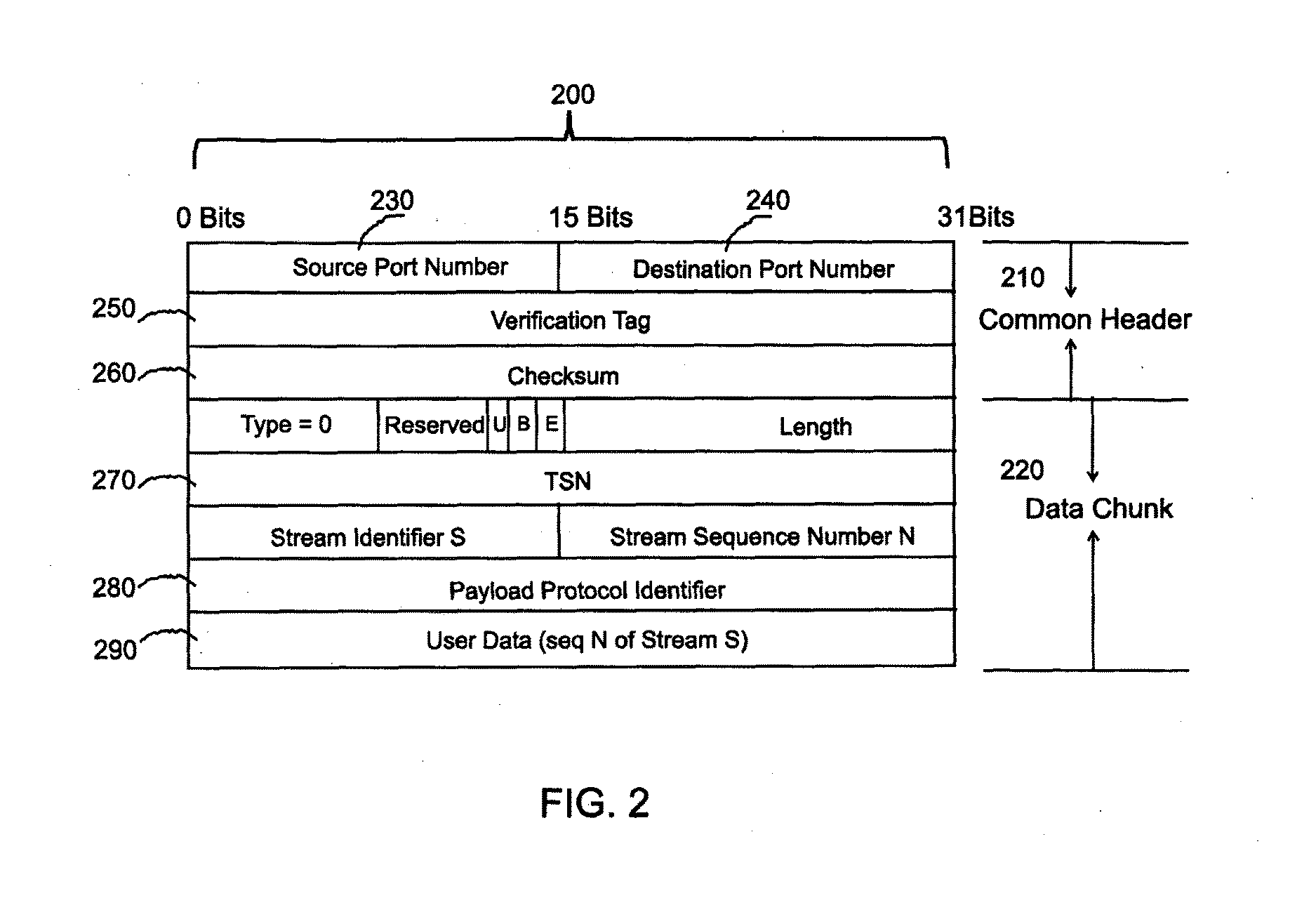Method and device for categorizing a stream control transmission protocol (SCTP) receiver terminal as a malicious sctp receiver terminal
a transmission protocol and receiver terminal technology, applied in the direction of transmission, electrical equipment, etc., can solve the problems of complete denial-of-service scenario, destabilizing the operation of a larger part of the connected upstream network including the internet, and virtually separating the target network from the internet through traffic jamming, etc., to achieve the effect of improving understanding aspects
- Summary
- Abstract
- Description
- Claims
- Application Information
AI Technical Summary
Benefits of technology
Problems solved by technology
Method used
Image
Examples
example-1
[0147]The system in Example-1 consists of two autonomous communicating entities realized through two physically independent computers both with Linux operating system and TCP / IP communication protocol stack built into their respective operating system kernels. Both the computers have SCTP communication protocol at their respective transport layer of the TCP / IP stack. One computer is designated as the SCTP data sender and the second one as the SCTP data receiver. For the complete functioning of the system presented in this invention, it is essential that both the communicating entities with specified features must be part of the system. The SCTP data sender and the SCTP data receiver are connected to different Local Area Networks and configured to exchange IP packets between them through the Internet. The Local Area Network of SCTP data sender is connected to the Internet with a router and an access link of 8 Mbps bandwidth. The data sender and the data receiver are 14 hops apart on ...
example-2
[0152]This example is similar to that in Example-1 except that here the system consisting of SCTP data sender and SCTP data receiver with the respective data enriched SACK validation and data enriched SACK generation capabilities are connected to the same Local Area Network and hence does not depend on the Internet for communication. Deployment of the system in the invention in an environment of this nature enables the SCTP data sender to detect and eliminate optimistic SACK spoofing based attacks originating from malicious SCTP receivers located within the same Local Area Network.
PUM
 Login to View More
Login to View More Abstract
Description
Claims
Application Information
 Login to View More
Login to View More - R&D
- Intellectual Property
- Life Sciences
- Materials
- Tech Scout
- Unparalleled Data Quality
- Higher Quality Content
- 60% Fewer Hallucinations
Browse by: Latest US Patents, China's latest patents, Technical Efficacy Thesaurus, Application Domain, Technology Topic, Popular Technical Reports.
© 2025 PatSnap. All rights reserved.Legal|Privacy policy|Modern Slavery Act Transparency Statement|Sitemap|About US| Contact US: help@patsnap.com



